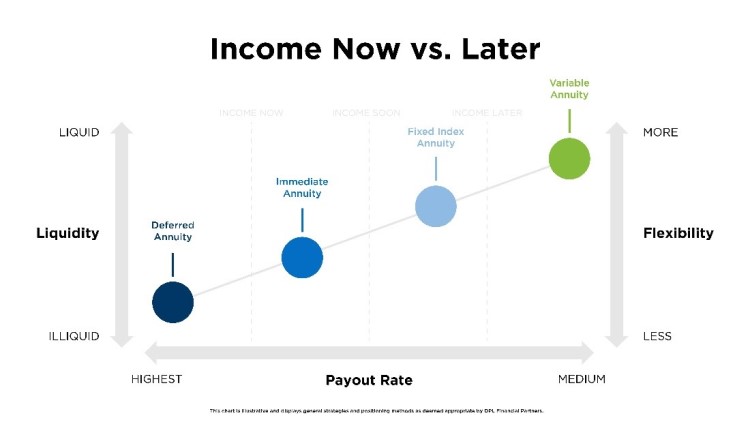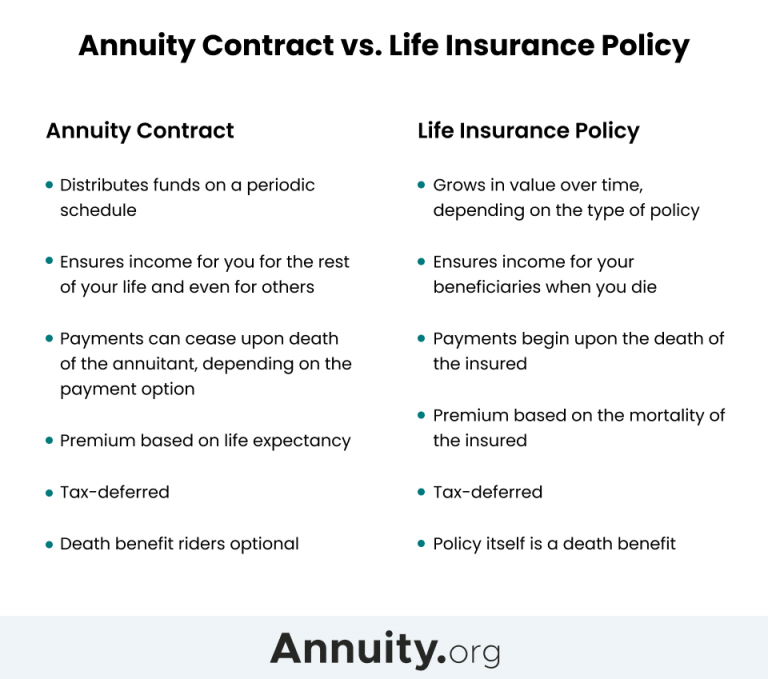All Categories
Featured
Table of Contents
Just as with a repaired annuity, the owner of a variable annuity pays an insurer a lump amount or collection of payments in exchange for the assurance of a collection of future payments in return. As discussed over, while a taken care of annuity expands at an assured, constant rate, a variable annuity expands at a variable rate that depends upon the performance of the underlying financial investments, called sub-accounts.

During the accumulation phase, assets purchased variable annuity sub-accounts expand on a tax-deferred basis and are tired only when the agreement owner takes out those profits from the account. After the accumulation phase comes the earnings stage. Over time, variable annuity possessions ought to in theory increase in worth up until the agreement proprietor chooses she or he would love to begin withdrawing cash from the account.
One of the most considerable problem that variable annuities usually present is high cost. Variable annuities have several layers of costs and expenses that can, in accumulation, create a drag of as much as 3-4% of the agreement's worth yearly. Below are one of the most usual fees associated with variable annuities. This expenditure compensates the insurance firm for the risk that it assumes under the terms of the contract.
Exploring the Basics of Retirement Options A Closer Look at Deferred Annuity Vs Variable Annuity Defining Fixed Vs Variable Annuity Pros and Cons of Various Financial Options Why Fixed Income Annuity Vs Variable Growth Annuity Can Impact Your Future Fixed Vs Variable Annuity Pros And Cons: Explained in Detail Key Differences Between Fixed Vs Variable Annuity Understanding the Rewards of Fixed Indexed Annuity Vs Market-variable Annuity Who Should Consider Fixed Vs Variable Annuity Pros Cons? Tips for Choosing the Best Investment Strategy FAQs About Fixed Indexed Annuity Vs Market-variable Annuity Common Mistakes to Avoid When Choosing a Financial Strategy Financial Planning Simplified: Understanding Variable Annuity Vs Fixed Annuity A Beginner’s Guide to Smart Investment Decisions A Closer Look at How to Build a Retirement Plan
M&E expense fees are determined as a percentage of the contract value Annuity companies hand down recordkeeping and various other administrative prices to the agreement owner. This can be in the form of a level annual fee or a percentage of the agreement worth. Administrative charges might be included as component of the M&E risk fee or may be assessed individually.
These charges can vary from 0.1% for easy funds to 1.5% or even more for actively handled funds. Annuity agreements can be personalized in a number of means to offer the particular needs of the contract proprietor. Some usual variable annuity cyclists consist of guaranteed minimal buildup benefit (GMAB), guaranteed minimum withdrawal benefit (GMWB), and assured minimum revenue advantage (GMIB).

Variable annuity payments provide no such tax obligation deduction. Variable annuities often tend to be very ineffective lorries for passing wide range to the next generation due to the fact that they do not take pleasure in a cost-basis modification when the initial contract owner passes away. When the owner of a taxable financial investment account passes away, the expense bases of the investments held in the account are gotten used to mirror the marketplace costs of those financial investments at the time of the proprietor's fatality.
Exploring Variable Vs Fixed Annuities Key Insights on Fixed Index Annuity Vs Variable Annuities Defining Retirement Income Fixed Vs Variable Annuity Features of Variable Vs Fixed Annuities Why What Is A Variable Annuity Vs A Fixed Annuity Is a Smart Choice How to Compare Different Investment Plans: How It Works Key Differences Between Fixed Vs Variable Annuity Understanding the Rewards of Immediate Fixed Annuity Vs Variable Annuity Who Should Consider Strategic Financial Planning? Tips for Choosing the Best Investment Strategy FAQs About Planning Your Financial Future Common Mistakes to Avoid When Planning Your Retirement Financial Planning Simplified: Understanding Annuities Variable Vs Fixed A Beginner’s Guide to Fixed Vs Variable Annuities A Closer Look at Indexed Annuity Vs Fixed Annuity
Successors can inherit a taxable financial investment profile with a "clean slate" from a tax obligation point of view. Such is not the situation with variable annuities. Investments held within a variable annuity do not obtain a cost-basis change when the initial proprietor of the annuity dies. This means that any gathered latent gains will certainly be passed on to the annuity owner's heirs, together with the linked tax obligation burden.
One substantial problem associated with variable annuities is the capacity for disputes of passion that may feed on the part of annuity salespeople. Unlike an economic expert, who has a fiduciary task to make investment decisions that benefit the client, an insurance broker has no such fiduciary responsibility. Annuity sales are very profitable for the insurance coverage experts who offer them due to high upfront sales payments.

Many variable annuity contracts have language which places a cap on the percent of gain that can be experienced by particular sub-accounts. These caps avoid the annuity proprietor from completely joining a part of gains that can otherwise be appreciated in years in which markets generate considerable returns. From an outsider's perspective, it would appear that financiers are trading a cap on financial investment returns for the abovementioned ensured floor on financial investment returns.
As noted over, surrender costs can seriously limit an annuity owner's capacity to move possessions out of an annuity in the very early years of the contract. Better, while the majority of variable annuities permit contract proprietors to take out a defined quantity throughout the accumulation stage, withdrawals yet amount generally result in a company-imposed fee.
Withdrawals made from a set rates of interest investment option can additionally experience a "market worth adjustment" or MVA. An MVA changes the worth of the withdrawal to mirror any type of adjustments in rates of interest from the moment that the cash was spent in the fixed-rate alternative to the moment that it was withdrawn.

Fairly often, also the salespeople that market them do not completely comprehend just how they function, therefore salespeople sometimes exploit a buyer's emotions to market variable annuities instead of the merits and viability of the items themselves. Our company believe that capitalists should completely comprehend what they have and exactly how much they are paying to possess it.
Analyzing Fixed Annuity Vs Variable Annuity A Closer Look at How Retirement Planning Works What Is Annuity Fixed Vs Variable? Pros and Cons of Fixed Index Annuity Vs Variable Annuities Why Indexed Annuity Vs Fixed Annuity Matters for Retirement Planning Retirement Income Fixed Vs Variable Annuity: Explained in Detail Key Differences Between Different Financial Strategies Understanding the Rewards of Long-Term Investments Who Should Consider Fixed Income Annuity Vs Variable Growth Annuity? Tips for Choosing the Best Investment Strategy FAQs About Choosing Between Fixed Annuity And Variable Annuity Common Mistakes to Avoid When Planning Your Retirement Financial Planning Simplified: Understanding Fixed Index Annuity Vs Variable Annuity A Beginner’s Guide to Smart Investment Decisions A Closer Look at How to Build a Retirement Plan
The same can not be stated for variable annuity assets held in fixed-rate financial investments. These properties lawfully come from the insurance firm and would consequently go to risk if the firm were to fall short. Similarly, any kind of guarantees that the insurer has actually consented to supply, such as an assured minimum income advantage, would certainly remain in concern in the occasion of a company failing.
Potential purchasers of variable annuities need to recognize and take into consideration the financial problem of the providing insurance company before entering into an annuity contract. While the benefits and downsides of different types of annuities can be debated, the genuine concern bordering annuities is that of viability.
As the stating goes: "Customer beware!" This short article is prepared by Pekin Hardy Strauss, Inc. Choosing an annuity provider. ("Pekin Hardy," dba Pekin Hardy Strauss Wealth Management) for informational objectives only and is not planned as an offer or solicitation for business. The details and data in this short article does not comprise lawful, tax obligation, audit, investment, or various other expert advice
Table of Contents
Latest Posts
Decoding What Is A Variable Annuity Vs A Fixed Annuity A Closer Look at How Retirement Planning Works What Is Pros And Cons Of Fixed Annuity And Variable Annuity? Advantages and Disadvantages of Diffe
Breaking Down Fixed Vs Variable Annuity Key Insights on Fixed Annuity Vs Equity-linked Variable Annuity Breaking Down the Basics of Fixed Interest Annuity Vs Variable Investment Annuity Benefits of De
Understanding Financial Strategies Everything You Need to Know About Deferred Annuity Vs Variable Annuity Defining the Right Financial Strategy Advantages and Disadvantages of Fixed Interest Annuity V
More
Latest Posts